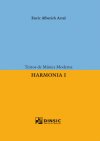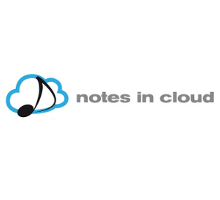Exercicis d'Entonació per a l'Educació de l'Oïda. 1 La tonalitat


Inside Pages
Author/Composer
Field
Music Schools and Conservatoires Intermediate Level
Collection
Language
Format
Book
Contents
Amidst such complexity, one of the most essential factors is the training of the ear. As music is basically addressed to our sense of hearing, it would seem logical that the development of this faculty should be of primary importance in the learning process. Despite this, it is often assumed that an ear for music develops by itself as instrumental skills improve. While it is clear that our auditory skills do get better as our instrumental techniques evolve, this is not enough. Instruments such as the voice, for example, are highly reliant on our capacity for auditory recognition. Furthermore, the instrument itself is dependent on our knowledge of how it should sound, and this in turn can prevent inapproriate 'anticipation', an important aspect of musical practice.
Technical Specifications
Measurements
21 x 29,7 cm, vertical
Binding
Adhesive binding. Plastic-coated cover.
Number of Pages
78
ISMN
979-0-69210-659-3
Editor
DINSIC Publicacions Musicals
Also collaborating:
Cover Designer
Irene Solsona
Related Publications
Fonaments del llenguatge musical
Array
(
[Relacionat] => Array
(
[id] => 16
[publicacion_id] => 5442
[publicacion_id1] => 4813
[type] => relacionada
)
[pub] => Array
(
[Publicacion] => Array
(
[id] => 4813
[titol] => Fonaments del llenguatge musical
[url] => score-tmm1-fonaments_del_llenguatge_musical
[codi] => TMM1
[intro] =>
[continguts_generals] => Along the different chapters of the book we will check, in an organized way (relatively organized and according to my point of view, of course), the whole system of symbols, codes and mechanisms used in music writing. In many cases we will also establish parallelisms between language (verbal) and musical language. Though they are two totally different faculties and even ruled by different parts of the brain, it is interesting to take the meaning of concepts such as spelling, grammar or syntax in order to determine behaviours and procedures when writing a score correctly.
The title 'Modern music texts. Musical language basis' does not mean that those 'basis' are recent invention, on the contrary. They are the result of an evolving tradition that goes back many centuries on time. In fact, they have been the result of the wish for reflecting in writing and to the maximum detail exactly what we want the musician to do when playing score. This is the reason why, when talking about the symbols and the codes, we will usually refer explicitly to jazz performing and modern music. Regarding this it is also important to keep in mind that music keeps evolving and, along with it, the musical language evolves as well. Due to the previous, some of these symbols and behaviour codes are not totally standardized. This fact happens particularly in the modern music field. In these situations, different procedures will be commented, along with an explicit recommendation of the most expanded and operative way to work, coming from my own knowledge and experiences.
[estructuracio] =>
[material_descarga] => 0
[titol_descarga] =>
[info_descarga] =>
[num_pags] => 168
[ismn] => M-69210-413-1
[diposit_legal] => B-47.031-2005
[codi_barres] => 8495055058
[isbn] => 84-95055-05-8
[preu] => 17.31
[exhaurit] => 0
[oferta] => 0
[en_preparacio] => 0
[recomanat] => 0
[novetat] => 0
[format] => Partitura
[ctecnica] =>
[ilustracion] =>
[num_pagines_interiors] => 0
[n_pag_annex] =>
[numero_particelas] =>
[numero_pagines_particelas] =>
[durada] =>
[visible_instrumentacio] => 1
[visible_formacions] => 1
[pdf_car_estructuracio] => 0
[pes] => 0,37
[published] => 1
[created] => 2006-07-19 11:17:00
[modified] => 2025-07-04 08:01:21
[ordenacion] => 2006-07-19 11:17:00
[puntuacio] => 0.00
[visto] => 5907
[rating] => 0.0
[votes] => 0
[parent] =>
[has_child] => 0
[locale] => en_gb
)
[Audit] => Array
(
)
[Category] => Array
(
[0] => Array
(
[id] => 81
[url] => elementary_level
[name] => Elementary Level
[parent_id] => 75
[descripcio] =>
[order] => 0
[lft] => 20
[rght] => 21
[published] => 1
[PublicacionsCategory] => Array
(
[id] => 2304
[publicacion_id] => 4813
[category_id] => 81
)
)
)
[Idioma] => Array
(
[0] => Array
(
[id] => 116
[nom] => Catalan
[published] => 1
[url] => catalan
[PublicacionsIdioma] => Array
(
[id] => 3685
[publicacion_id] => 4813
[idioma_id] => 116
)
)
)
[Rsspost] => Array
(
)
[Archivesrelation] => Array
(
[0] => Array
(
[Archivesrelation] => Array
(
[id] => 1701
[model] => Publicacion
[foreign_id] => 4813
[order] => 0
[file_id] => 2271
[archivestypes_id] => 2
)
)
[1] => Array
(
[Archivesrelation] => Array
(
[id] => 1702
[model] => Publicacion
[foreign_id] => 4813
[order] => 0
[file_id] => 2272
[archivestypes_id] => 3
)
)
)
[PublicacionsIdioma] => Array
(
[Idioma] => Array
(
[id] => 116
[nom] => Catalan
[published] => 1
[url] => catalan
[locale] => en_gb
)
)
)
[path] => music_schools_and_conservatoires-elementary_level
)
18.00 €
Harmonia 1
Array
(
[Relacionat] => Array
(
[id] => 17
[publicacion_id] => 5442
[publicacion_id1] => 4788
[type] => relacionada
)
[pub] => Array
(
[Publicacion] => Array
(
[id] => 4788
[titol] => Harmonia 1
[url] => score-mm2-harmonia_1
[codi] => MM2
[intro] => Study of new applications of contemporary harmony to today's music styles.
[continguts_generals] =>
In the field of modern music the study of contemporary harmony has provided fertile ground for the emergence of numerous books, all seeking to provide an explanation and rationale for the various new applications of harmony to today's music styles. Rarely, however, has a book emerged that treats the subject with such clear understanding and organization as this new text by composer and educator, Enric Alberich.
Larry Monroe
Academic Vice President
Berklee-Valencia
[estructuracio] =>
Hamonia
Hamonia Major
Harmonia Menor
Harmonia en el 'blues'
Ampliació de l'anàlisi harmònica
Epíleg
Glossari de temes
[material_descarga] => 0
[titol_descarga] =>
[info_descarga] =>
[num_pags] => 248
[ismn] => 979-0-69210-619-7
[diposit_legal] => B-28558-2009
[codi_barres] => 9788496753228
[isbn] => 978-84-96753-22-8
[preu] => 28.85
[exhaurit] => 0
[oferta] => 0
[en_preparacio] => 0
[recomanat] => 0
[novetat] => 0
[format] => Llibre
[ctecnica] =>
[ilustracion] => Colour cover
[num_pagines_interiors] => 0
[n_pag_annex] =>
[numero_particelas] =>
[numero_pagines_particelas] =>
[durada] =>
[visible_instrumentacio] => 1
[visible_formacions] => 1
[pdf_car_estructuracio] => 0
[pes] => 0,5
[published] => 1
[created] => 2009-07-22 00:00:00
[modified] => 2025-07-04 08:01:20
[ordenacion] => 2009-07-22 00:00:00
[puntuacio] => 0.00
[visto] => 6160
[rating] => 0.0
[votes] => 0
[parent] =>
[has_child] => 0
[locale] => en_gb
)
[Audit] => Array
(
)
[Category] => Array
(
[0] => Array
(
[id] => 82
[url] => intermediate_level
[name] => Intermediate Level
[parent_id] => 75
[descripcio] =>
[order] => 0
[lft] => 22
[rght] => 23
[published] => 1
[PublicacionsCategory] => Array
(
[id] => 2495
[publicacion_id] => 4788
[category_id] => 82
)
)
[1] => Array
(
[id] => 83
[url] => advanced_level
[name] => Advanced Level
[parent_id] => 75
[descripcio] =>
[order] => 0
[lft] => 24
[rght] => 25
[published] => 1
[PublicacionsCategory] => Array
(
[id] => 2496
[publicacion_id] => 4788
[category_id] => 83
)
)
)
[Idioma] => Array
(
[0] => Array
(
[id] => 116
[nom] => Catalan
[published] => 1
[url] => catalan
[PublicacionsIdioma] => Array
(
[id] => 3868
[publicacion_id] => 4788
[idioma_id] => 116
)
)
)
[Rsspost] => Array
(
)
[Archivesrelation] => Array
(
[0] => Array
(
[Archivesrelation] => Array
(
[id] => 1766
[model] => Publicacion
[foreign_id] => 4788
[order] => 0
[file_id] => 2336
[archivestypes_id] => 2
)
)
[1] => Array
(
[Archivesrelation] => Array
(
[id] => 1767
[model] => Publicacion
[foreign_id] => 4788
[order] => 0
[file_id] => 2337
[archivestypes_id] => 3
)
)
)
[PublicacionsIdioma] => Array
(
[Idioma] => Array
(
[id] => 116
[nom] => Catalan
[published] => 1
[url] => catalan
[locale] => en_gb
)
)
)
[path] => music_schools_and_conservatoires-intermediate_level
)
30.00 €











